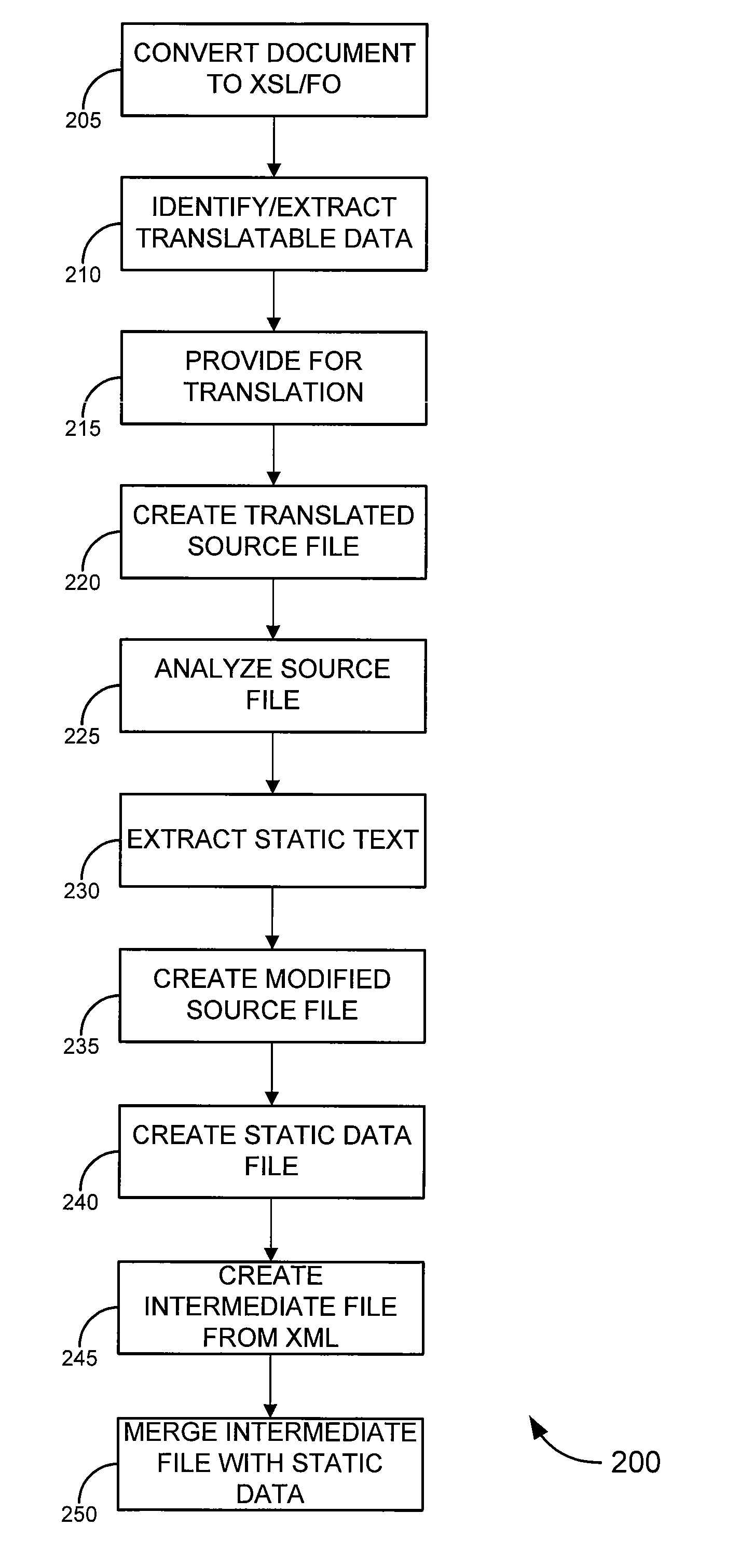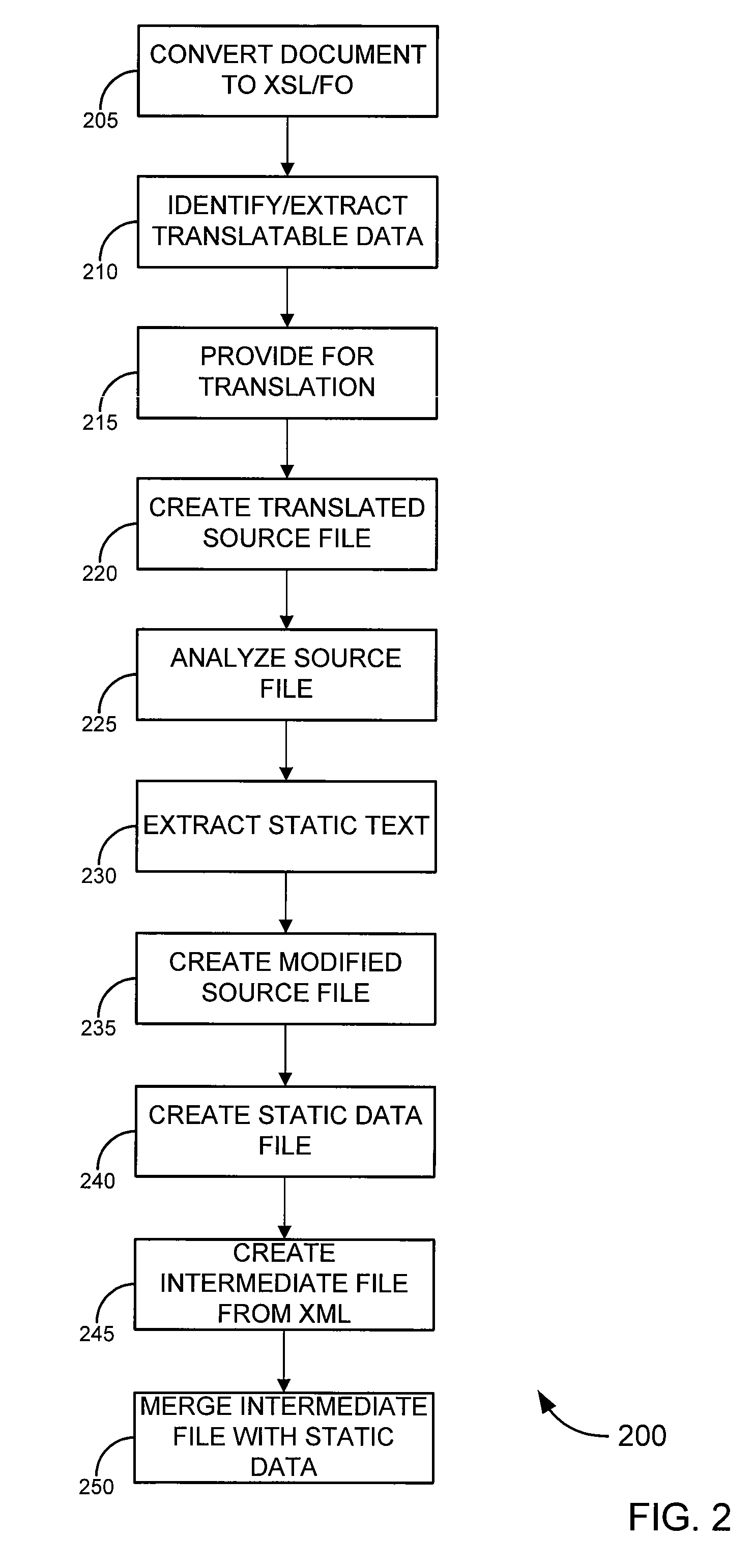Xsl transformation and translation
a technology of xsl and translation, applied in the field of transforming and translating documents, can solve the problems of difficult to tell on an automated basis which data in a particular xsl or xml file is localizable, and achieve the effect of enhancing the speed of transformation of such files
- Summary
- Abstract
- Description
- Claims
- Application Information
AI Technical Summary
Benefits of technology
Problems solved by technology
Method used
Image
Examples
Embodiment Construction
[0025] Embodiments of the invention provide novel systems, methods and software programs for transforming and / or translating a variety of documents, including without limitation XSL files. One skilled in the art will appreciate that XSL files are often used to provide a formatting “template” that can be applied to one or more sets of XML data, allowing those XML data sets to be formatted and / or output in a consistent format. Hence, an XSL file, and in particular an XSL / FO file, often will contain both dynamic data and static data. As used herein, the term “dynamic data” is used to describe data (and in particular, data in an XSL or XSL / FO file) that is variable according to the XML data to which the XSL file is applied. Examples of dynamic data include references, conditional formatting statements, variables and / or the like, the values of which depend on the XML data used in transforming the XSL file. Conversely, the term “static data” is used to described data that remains consiste...
PUM
| Property | Measurement | Unit |
|---|---|---|
| Speed | aaaaa | aaaaa |
| Dynamic | aaaaa | aaaaa |
Abstract
Description
Claims
Application Information
 Login to View More
Login to View More - R&D
- Intellectual Property
- Life Sciences
- Materials
- Tech Scout
- Unparalleled Data Quality
- Higher Quality Content
- 60% Fewer Hallucinations
Browse by: Latest US Patents, China's latest patents, Technical Efficacy Thesaurus, Application Domain, Technology Topic, Popular Technical Reports.
© 2025 PatSnap. All rights reserved.Legal|Privacy policy|Modern Slavery Act Transparency Statement|Sitemap|About US| Contact US: help@patsnap.com



